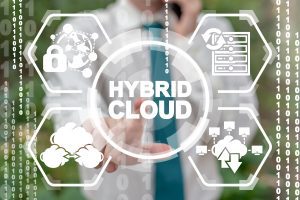How enterprise-grade IoT will create the business world of tomorrow.

The world we live in is constantly changing, and the unseen networks we all rely on are more important than ever. From smart homes to healthcare tracking, communication between machines is a constant.
This hidden world of communication has been around for years, yet despite all the innovations of the Internet of Things (IoT), we’re still at the early stages, with far more growth ahead. Now, while IoT may conjure images of Wi-Fi-connected fridges, it is actually an evolution of machine-to-machine (M2M) communication. IoT breaks the silo effect of communication between one machine and another and instead opens the door to massive deployments of connected devices collecting data from multiple sources.
Smart cities, smart agriculture and smart healthcare all rely on IoT applications to collect, analyze and act on data, making processes more efficient. Such data-driven communication has allowed for vast logistics networks worldwide, leading to the fast-paced society we live in today and ever-increasing consumer expectations.
So, how do we connect the growing number of IoT devices worldwide? Shorter range connectivity technologies, such as RFID, Bluetooth, and Wi-Fi, are too reliant on proximity and fail at long distances, and their single connection has no backup. Therefore, the most reliable method for IoT communication is cellular networks.
Yes, trucks, wind farms, and even beehives communicate on the same networks as you and I. But instead of funny GIFs on WhatsApp, they’re sending small data sets at frequent intervals. The difference is that the communication between devices is far more crucial.
Healthcare, national security, and energy providers are essential systems which need always-on communication to send data. Therefore, SIM cards used in devices transmitting such data
are designed to connect to multiple networks.
Access to multiple networks allows the SIM to switch to the strongest signal. If a network is down, there are more to connect to. The more networks a SIM can handle, the better the uptime. The added benefit is that cellular networks are far more secure than any of the connectivity technologies mentioned above.
IoT has massive potential for enterprise, and this is where the evolution of IoT communication is going – and what I am personally most excited about.
IoT for business is how the company I lead, Pod Group, began, with IoT for logistics. Tracking delivery trucks helps to improve productivity, leading to increased revenues for logistics companies. One example is Amazon’s ability to deliver such small, low-cost items within 24 hours without a delivery charge. IoT communication is behind it all.
Jeff Bezos is hardly the only leader of an enterprise obsessed with productivity. When a process can be made more efficient using quick analysis of fast-moving data, the business will benefit. So, wouldn’t it make sense for the next business revolution to be built on the foundations of an improved network for better IoT communication.
The problem is that there are barriers to maximizing networks’ full potential for IoT applications. There are currently two types of network operators; Mobile Network.
Operators (MNO) and Mobile Virtual Network Operators (MVNO). However, the services offered by MNOs often lack the flexibility required for IoT connectivity, and MVNOs, while more focused on connecting IoT applications, are often reliant on MNO network infrastructure and therefore provide less visibility and control.
However, a recent innovation in telecoms and IoT has allowed for a better business solution for IoT communication. eSIMs can be soldered into devices and include multiple network profiles on the same SIM. These can be swapped remotely “Over The Air (OTA)” meaning that the SIM never needs to be swapped out. As pricing and market conditions change, the enterprise can simply switch networks to ensure the best price or coverage for their connected devices.
Coinciding with this, a new type of network operator has been created to make the most of this technology. An Enterprise Network Operator (ENO), takes the best features of an MNO and an MVNO to put the ownership of the network into the hands of the enterprise and provide completely tailored IoT connectivity.
Whereas MVNOs offer flexible, IoT-specific connectivity without the network control that IoT enterprises require, and MNOs provide reliability and visibility at the cost of being tied into inflexible contracts and consumer-focused connectivity, ENOs manage their own network, designed for fast-paced, high-volume IoT communications.
Essentially, an ENO offers businesses the ability to run their own network via a Network as a Service (NaaS) model, meaning all the processes are owned or can be managed on the business’ behalf by the ENO. This enables the creation of customized connectivity services for the enterprise, which can be controlled centrally via an intuitive platform. Each IoT application is different and therefore has different connectivity requirements. An ENO gives enterprises the flexibility they need to deploy and manage their connected devices, thereby speeding up time-to-market and increasing efficiency.
The next Amazon, Google, or Facebook will undoubtedly be a company reliant on data, if not commercializing it as their main business model. Enterprise IoT will be a critical factor in the success of such companies.
The introduction of ENOs will help to build a new, improved, connected economy. ENOs are the modern Silk Road, a pathway towards the digital transformation of enterprises, an alternative to the restrictive networks of the past, and the foundations of the businesses of tomorrow.
By: Sam Colley, CEO, Pod Group.
